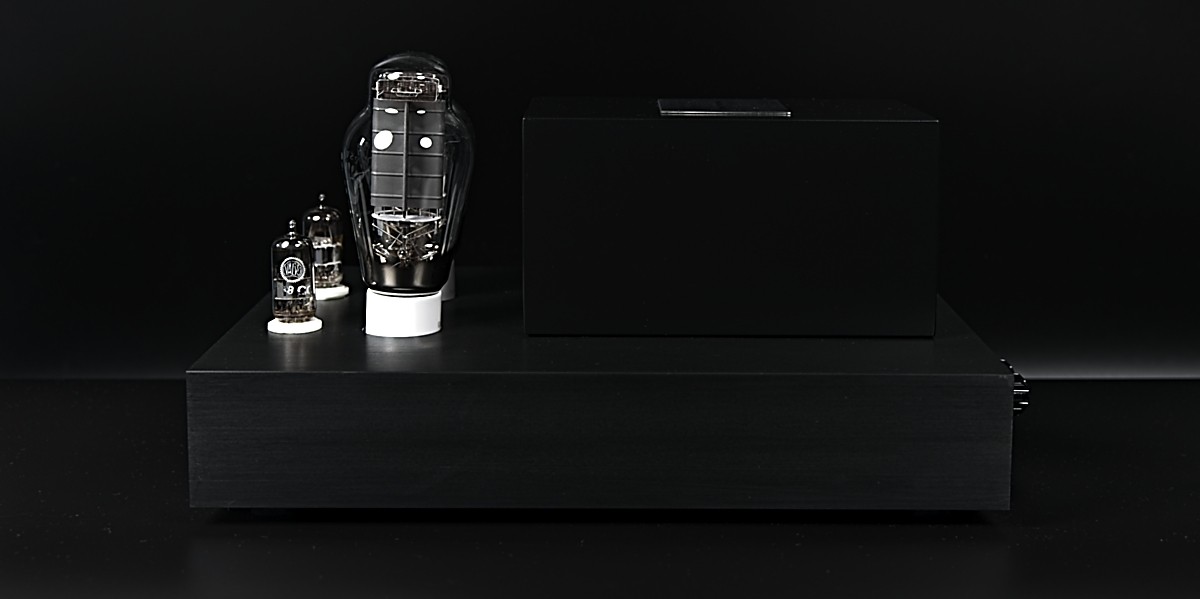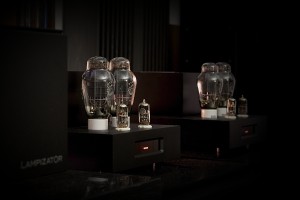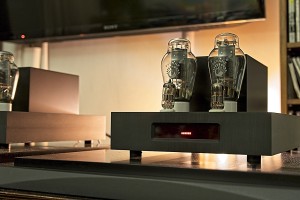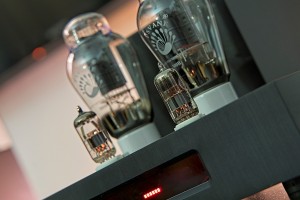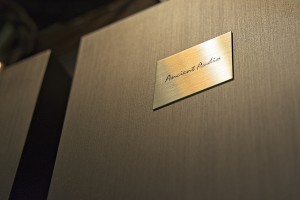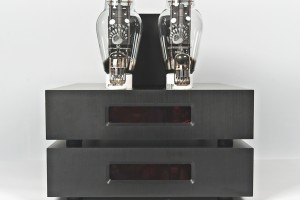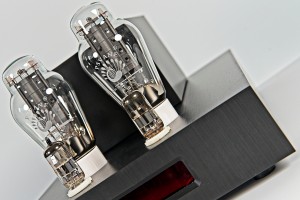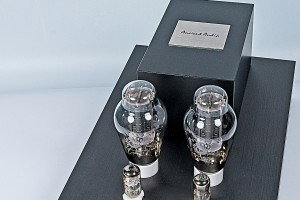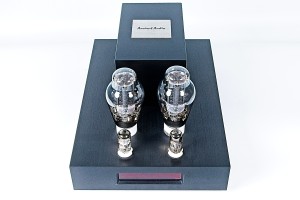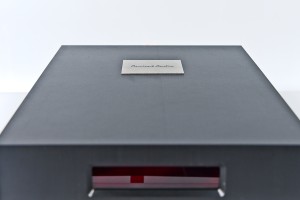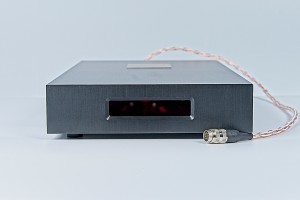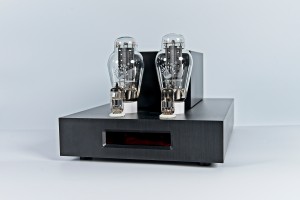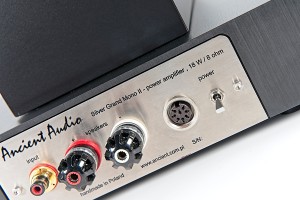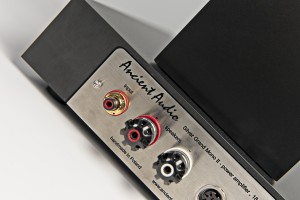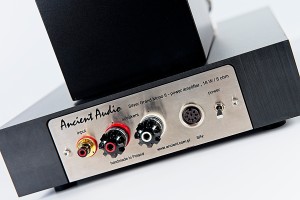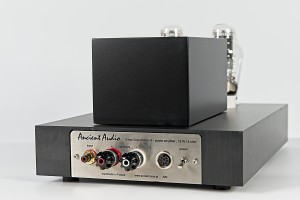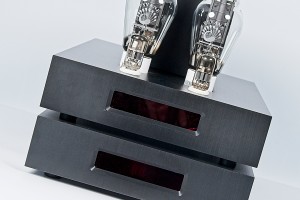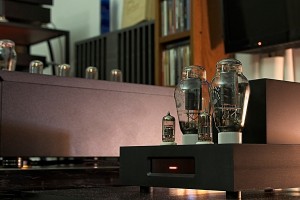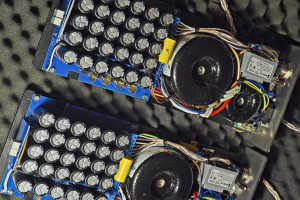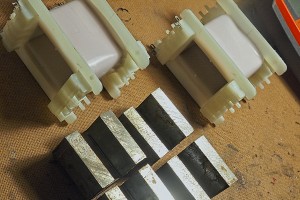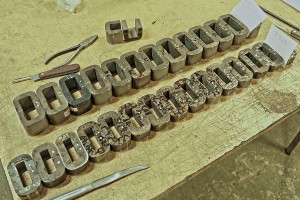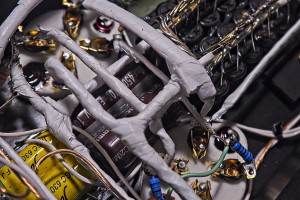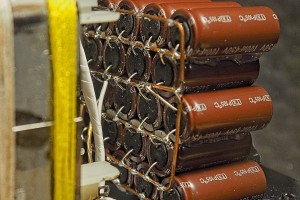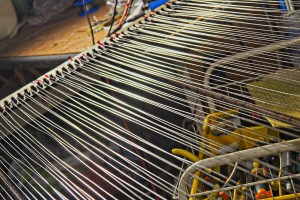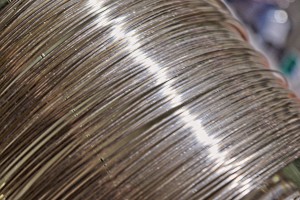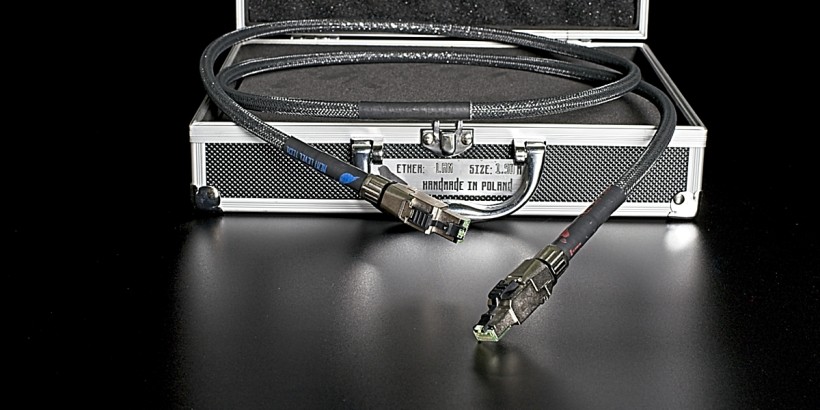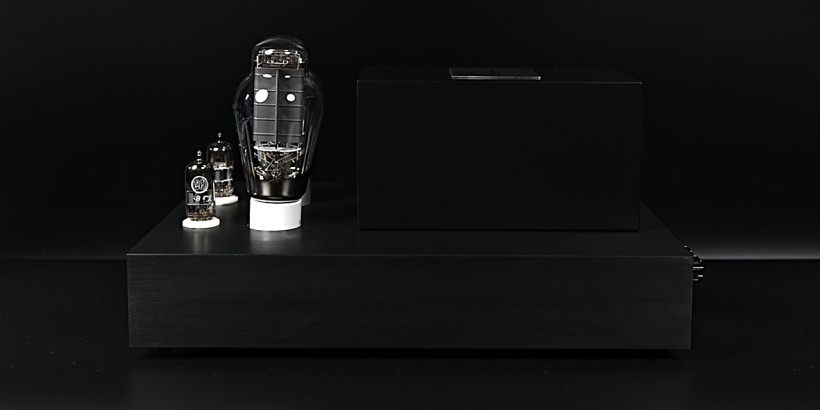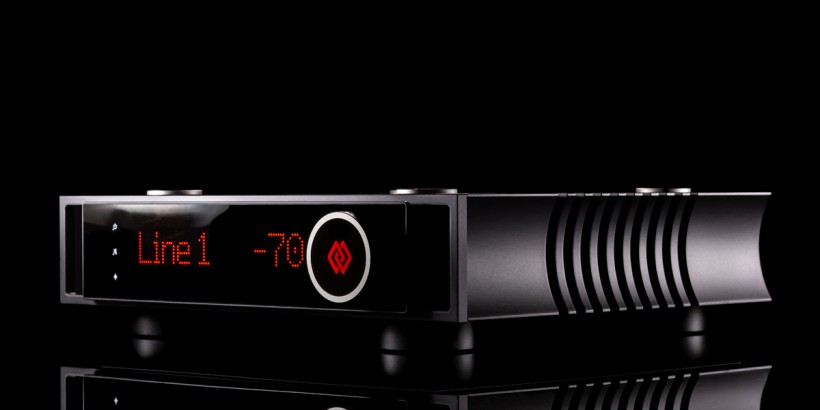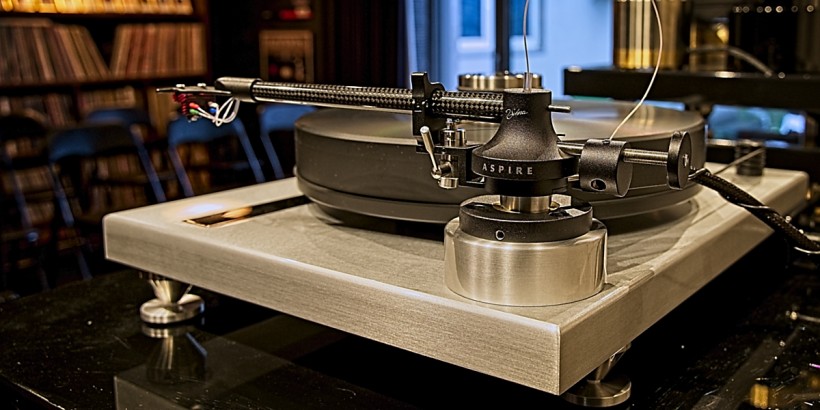When you celebrate the 30th anniversary of your successful business, you should do it with a bang. That’s the thought that drove Mr. Jaromir Waszczyszyn to prepare a few special products. One of them is a new version of his legendary 300B amplifiers. Let’s see what the Ancient Audio Silver Grand Mono II has to offer.
Introduction
I can’t say that I am an expert on the Ancient Audio’s portfolio. I’ve known Mr. Waszczyszyn for many years. I listened to his amplifiers, loudspeakers, CD Players, and digital speaker processors numerous times at the Warsaw Audio Video Shows. Never before, though, have I had a chance to assess any of those components in my room, in my system. Why? The answer is simple – it is a boutique company that manufactures every component upon order only.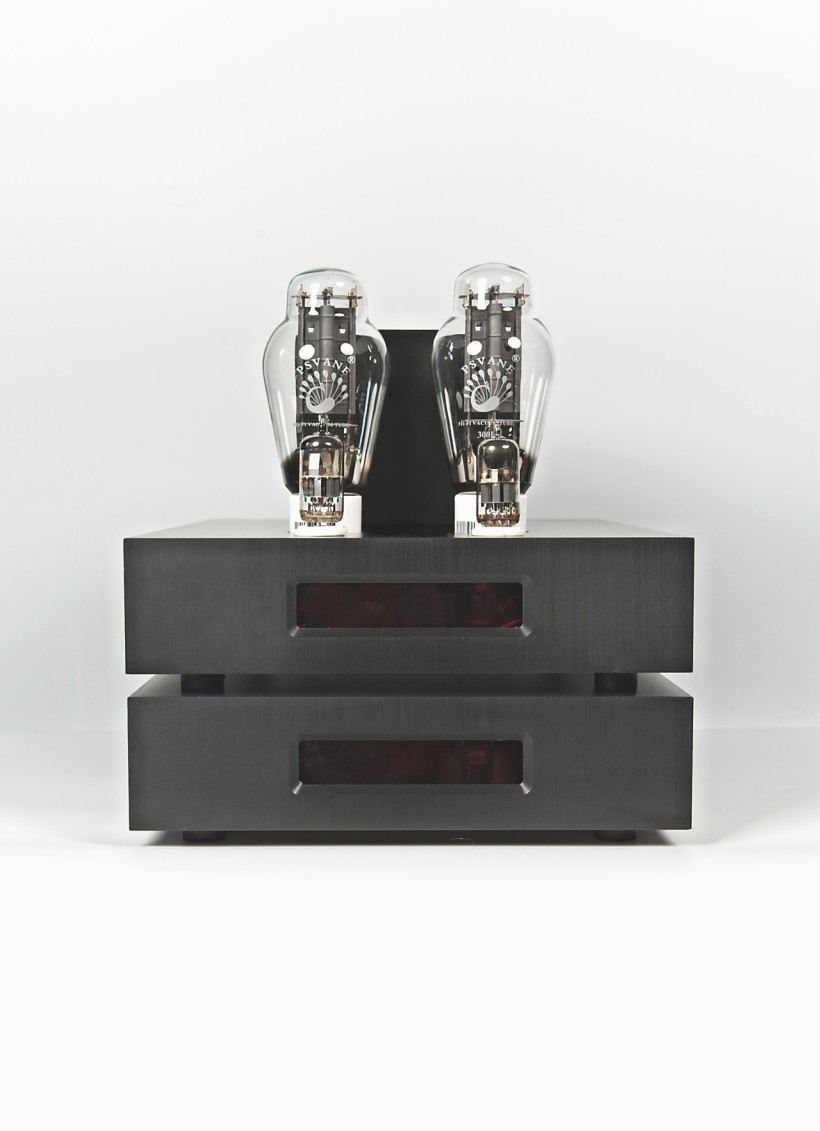
All of them are hand-made by the designer himself, and each takes a long time to build. In other words, there are no stocks, no amplifiers or CD Players collecting dust on some shelves, and a unique opportunity must arrive for the manufacturer to have a product at his disposal for a review. Luckily for me, such an opportunity recently arrived. A customer ordered a pair of the new Ancient Audio Silver Grand Mono II, one of the two products (the other one being CD Lektor 30 Anniversary) developed in celebration of the company’s 30th anniversary. When these were ready, the customer postponed the delivery date, which created a small time window that could be used for a test. That gave Mr. Waszczyszyn an idea to contact me, and after hastily freeing my schedule, I happily, jumped on the occasion. So here were are.
Let’s see first what the designer. himself has to say about the backstory of his monaural amplifiers:
 Mr. Jarek Waszczyszyn and his famous hat
Mr. Jarek Waszczyszyn and his famous hat
Every self-respecting audiophile knows about Hiroyasu Kondo, the legendary designer who elevated tube amplifiers to the pinnacle of perfection. The canon of tube amplifiers: silver transformers, silver wiring, directly heated triodes, and tube rectifiers was as indisputable a recipe for good sound as the beauty of Beethoven’s Fifth Symphony.
No wonder that my first serious tube amplifiers, the Silver 300s, were built according to these principles, and they sounded very good. Especially the pair that was intended for a customer in the USA, unlike all the pairs I’d built before, powered by a 115 V transformer. Interestingly, at that time, two more pairs were assembled from exactly the same materials, but for the European voltage of 230 V. The problem was, as it turned out when comparing them directly, that there was no way to achieve with the latter two the space, dynamics, and amazingly natural performance that the ‘American’ pair offered.
I analyzed everything, including the time of the day when I soldered individual components, the color of my socks, and my solid and liquid diet at the time, and I still couldn’t find out where the difference in performance came from. Obviously, there was a difference in terms of the power transformer (115 vs 230V), but both versions featured identical secondary side mains transformer voltages… And that’s where doubts about Kondo’s canon began. Everything made sense from an engineering point of view to me, except for the tube rectifier.
Well, every amplifier, especially a tube one, should be powered by a source with a constant voltage and minimal resistance. Meanwhile, the tube rectifier was an archaism from the 1920s, and its parameters were terrible. On the one hand, I am an artist, creating sound and form, sensitive to the emotions of music. On the other hand, I am an engineer who needs a physical explanation for everything. I love Jimi Hendrix’s guitar voodoo, but the captivating descriptions of certain solutions based on black magic irritate me. I can’t use them, I can’t design that way. And the worst thing about them is that sometimes they do work!
Therefore, an obvious solution was to use a power supply built with modern semiconductors, with stable voltage, low ripple effect, and high current. I developed and built such power supplies, and everything worked except for the sound quality… it was actually worse than what I’d achieved with a classic tube rectifier. After two years of experimentation, the sound still lacked energy and power. Desperate, I supplied 260 V instead of 220 V to the power supplies. Together with Janusz (an invaluable golden ear during the design process), we put on protective glasses and, expecting the worst, just as every bomb disposal expert when getting to work, we cued in the first disc in the CD Player, and… that was it! As blissful as Winnie the Pooh with honey, we savored all the flavors that the familiar albums revealed.
The energy and power of the new power supply were not easy to control, and it took quite some time before the semiconductor-based PS was ready for mass production. However, I finally got there, and the sonic results of the new design surpassed the legend, which we had the opportunity to hear for ourselves. Needless to say, the atmosphere during the listening sessions was as tense as a Politburo meeting during Stalin’s time. To cut a long story short, it didn’t come to a fist fight, but harsh words were exchanged, as if I had spat in church.
It was then that I understood how emotional audio is, how thin the line between experience and religion. In many aspects, such as attack, directness, and the tangibility of instruments, the amplifier better conveyed the illusion of live performance than the Kondo design. This is how the Silver Grand Mono, a revolutionary tube amplifier solution, was developed. It was considered by many audiophiles and journalists to be the best-sounding design ever created.
Time did not stand still, and with a thorough understanding of the impact of power supply on the SET amplifier, new components were tested using a method of small steps, or fine-tuning. The sum of all these small steps resulted in further significant progress in sound quality. Finally, when the granite housings gave way to aluminum ones, after 20 years, it was time to sum up all the improvements and upgrades in the form of the second edition of the amplifier.
I am sending you a few photos of the amplifier’s ‘guts’. I have talked a lot about power supplies, but I have to mention output transformers also. This is the second key element of my design, and a very expensive one at that. I no longer wonder why the price of ONE transformer for Ongaku was, if I remember correctly, £20,000, but that was 30 years ago… And it was considered a bargain.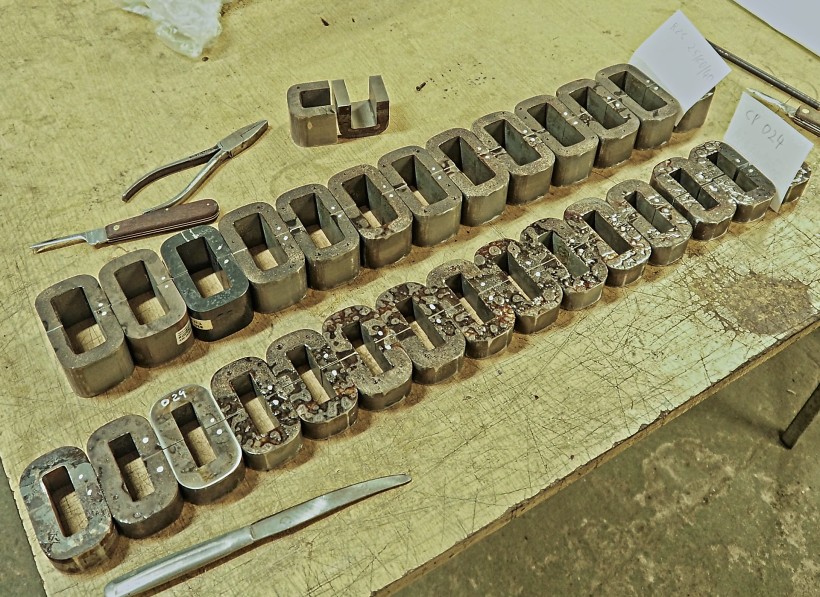
For my output transformers, I use silver wire, custom-made by a friendly laboratory. Still, they made a beautiful silver wire, but it had to be insulated by hand and then wound. It took me two years of messing around with wire, varnish, ‘squirrel tail’ brushes, etc., to gain the necessary experience to do it properly. Currently, it takes two months to make a set of transformers, which is half the time it takes to produce an amplifier. Of course, this required the right cores. They are made by a company with 50 years of experience. It is also a one-off, precise, manual job. What’s more, each amplifier requires about one kilogram of the purest silver, and the amount of precise work at each stage is enormous. All these elements are a significant part of the cost of manufacturing the amplifier and are reflected in its final price.
Design and Features
As already stated, Ancient Audio Silver Grand Mono II is a tube power amplifier, or actually a pair of monaural ones offering 16 watts output per channel. Unlike many other devices of this type, the Polish components are quite compact as they feature outboard solid-state power supplies. That’s what this model has in common with its predecessor – not only are the left and right channels are separated, but each of them is a two-box design. Mr. Waszczyszyn, as you have already read above, attributes a huge role in achieving the required top performance to the power supply sections of his devices.
Since tubes and tube circuits are quite susceptible to noise, designers face a dilemma of how to shield them from the power supply section, which can be a source of noise. In this case, the latter are completely separated and utilize separate housings. Ultimately, what you get are two PSs and two amps – 4 boxes altogether. You can place an amplifier section directly on top of its power supply or, say, on a lower shelf of your rack. Mr. Waszczyszyn is not orthodox about it, but whenever possible, it is recommended to use the latter option (which I did).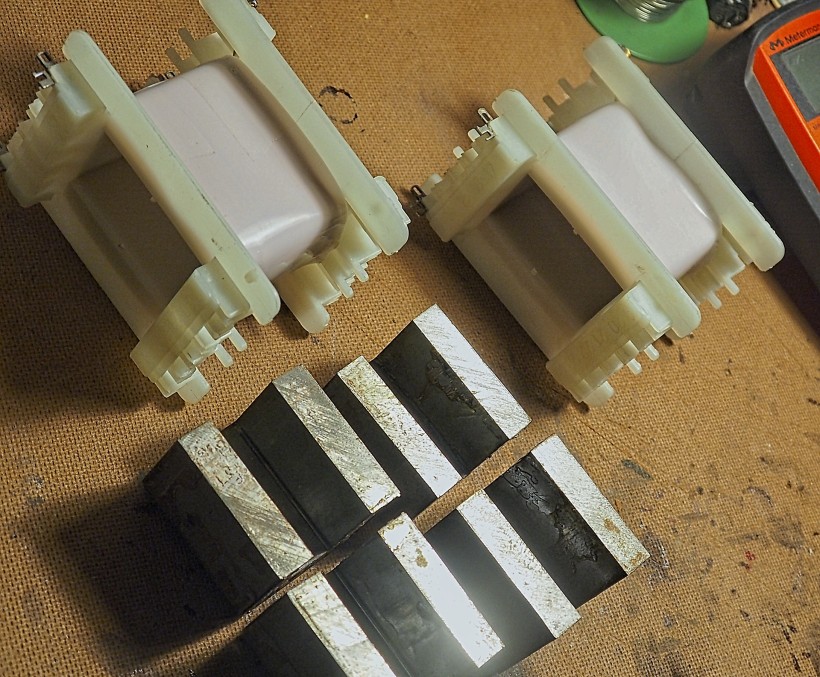
Those who know the original device will immediately recognize one significant change in the design and look of the devices. Instead of a chassis made of granite, the new version features custom-made aluminum ones. These are anodized black and not that big (or heavy for that matter) with a footprint (identical for the amplifier and power supply sections) of 250 x 350 mm. Both sections feature simple rubber (?) feet which do a surprisingly good job, and yet, considering the price of this model, you may want to choose one of many high-quality anti-vibration feet available on the market (I used Omex Symphony 3S – you can check out the review HERE). Let me add that the PS section seems heavier than the amp. Both are connected via solid umbilical cords terminated with screw-on, multi-pin connectors.
Both chassis are virtually identical with the same footprint, shape, and a simple display in the front. The one in the power supply section shows you that the power is on, the one in the amplifier indicates whether the bias for tubes is right (it should show 5 or 6 vertical lines). The rear panel differs with the PS featuring an IEC power inlet and a multi-pin outlet that, via umbilical, is connected to the amplifier section, and the amp lacks an IEC but offers an RCA input, speaker outputs, and an on/off flip switch.
On top of the latter, there are four tubes that sit in Teflon sockets with gold-plated contacts. The pair in front are two NOS double triodes, E88CC (used as an input buffer) and ECC83 (as a driver for the output tubes). The two behind are 300B output tubes operating in the PSE mode, sourced from the PSVANE basic line. When asked about it, Mr. Waszczyszyn gave me the same answer as most designers of tube amplifiers, including Mr. Ashizawa from Kondo, which is that he offers his amplifiers with basic, reliable, easy-to-replace tubes. Still, users of his amplifiers are welcome to try out other 300B (or input) triodes as they please if they feel the need to push the performance even further.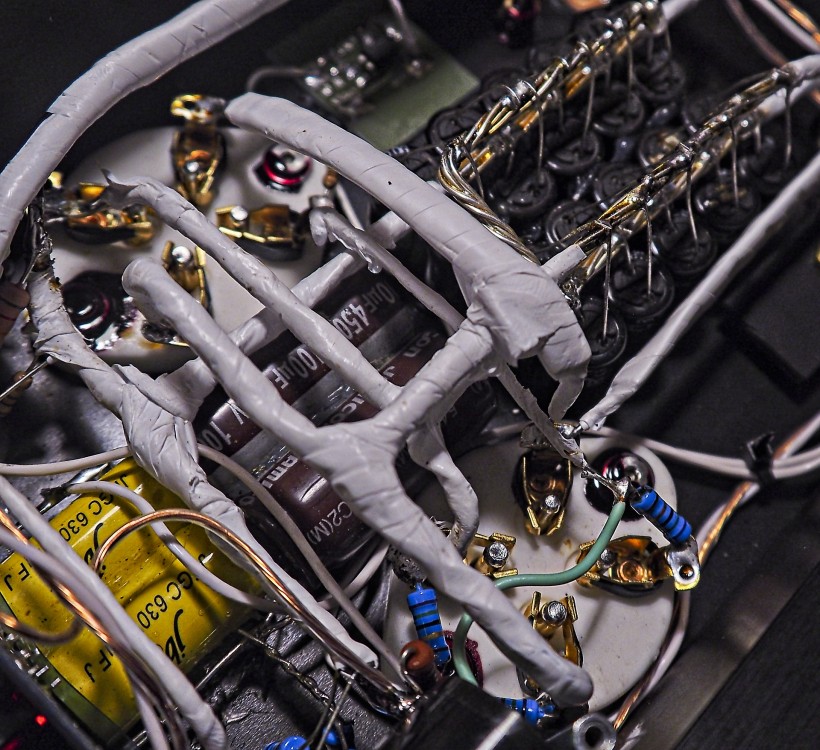
Behind the tubes sits an output transformer in a black housing with a small silver plate on top featuring the brand’s logo. As you already know, the output transformer is yet another key component of (not only this one but any tube) amplifier. It is custom-made using custom-made high-purity silver wire insulated with Teflon. The internal wiring of the Silver Grand Mono II monoblocks is, again, silver – this time a Teflon-insulated silver ribbon. The designer says, there is one kilogram of silver in each amplifier (!). Also, the core for the output transformer is not an off-the-shelf one, but rather a custom-made component. The circuit works with no global or local feedback. To achieve the top performance, the designer carefully selected all the components, including V-Cap Teflon / Tin Foil signal capacitors.
The power supply, which, as you may have read above, took a lot of time and effort to develop, features a large bank (30 units) of filament ultra-fast smoothing small-capacity capacitors (160,000 μF total). There are six independent mains transformers (three per channel, two of which are toroidal ones), and all voltages are stabilized. Unlike inside the power supply section, you won’t find any PCBs in the amplifier – all components in it are connected using the point-to-point technique.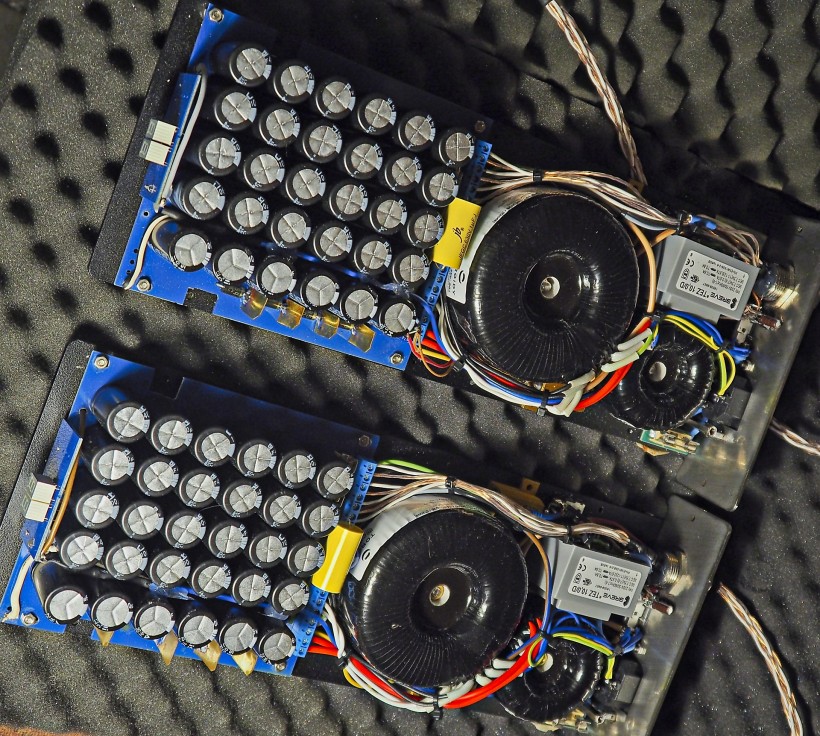
Sound
As some of you may already know, I love 300B triodes and amplifiers using them belong to my personal favorites. Yes, as my first choice, I’d name SET configuration, but there are some magnificent push-pulls as well. The advantages of the tube itself are one thing, but the skillful application is another decisive factor when it comes to the performance, and therefore, not all 300B amplifiers sound equally good. As stated before, Mr. Waszczyszyn worked long and hard on his latest development and took care of even the smallest details of this design. That is why I was so excited to get to know the new Ancient Audio Silver Grand Mono II. Not only was it my first chance to experience a product of this company in my own listening room, the top one at that, but it also featured two 300Bs in PSE mode in each channel.
The sort of ‘standard’ setup for the Ancient Audio also includes one of their own CD Players. These feature an adjustable output, thus simplifying the setup by eliminating the need for a separate preamplifier (unless one uses multiple sources). In this case, though, it was the LampizatOr Poseidon that served as both, D/A Converter and a preamplifier. I’d known that a lot of its users skip the separate preamplifier in their setups because LampizatOr features a high-quality volume control, but also digital and analog inputs. This allows them to use it to drive their power amplifiers, both tube and solid-state, directly, even if they use more than one source. Now it was my chance to check it out with the top tube power amplifiers, and so I did. It turned out to be a very good idea, as the combined forces of these two reference devices, both Made In Poland (!), may I proudly add, delivered (spoiler alert!) an outstanding performance.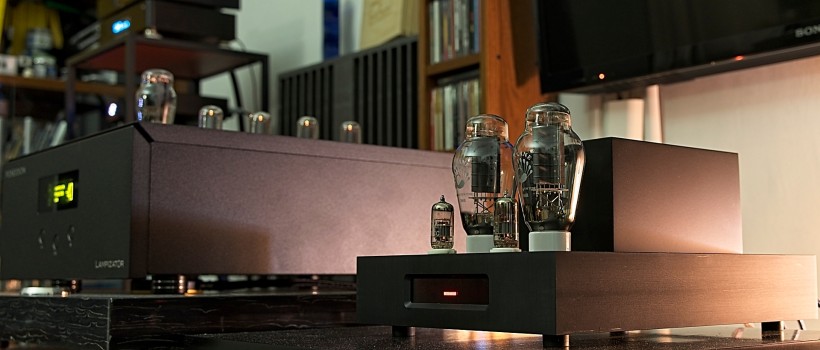
As an alternative source, I used my analog rig with the fabulous J.Sikora Standard Max turntable (with the KV12 Max Zirconium Series, review HERE, and KV9, review HERE, tonearms) and GrandiNote Celio mk IV phonostage (review HERE). It was connected using Bastanis Imperial RCA interconnect to Poseidon’s analog input.
The Silver Grand Mono II drove three pairs of speakers (interchangeably) during my listening sessions. The first choice seemed obvious, namely, my trusted high-efficiency GrandiNote MACH4. Yet, since these 300B monoblocks feature exceptional power supply and output transformers, I decided to check them out with my alternative pair of large, 3-way, closed-cabinet Ubiq Audio Model One Duelund Edition. Additionally, since on the very same day as the tested monoblocks, yet another, according to their designer, final (definitely the best so far!) version of the AudioForm M200 stand-mount speakers arrived, I used the opportunity to use them as well while assessing the Ancient Audio amplifiers.
Let me start by mentioning that I’ve listened to many 300B amplifiers over the years, relatively inexpensive as well as very expensive ones. Therefore, I realize that, opposed to the common misconception, there is no such thing as „300B sound” that they all share. Yes, they do share some qualities, and yet they range from warm-sounding, strongly midrange-focused ones with withdrawn band’s extremes, to those that are easy to confuse with solid-state amps (at least ones from recent years, that sound way more natural than many older ones), and plenty (probably most) that I would put somewhere in between. After listening to Ancient Audio Silver Grand Mono II just for a few minutes, it was clear to me that, first of all, it was not one of those warm, super-lush, „cushy” soundings 300B amps. If that’s what you’re after, the tested monoblocks are not for you.
On the other hand, those who look for a perfect blend of a natural and at the same time realistic (or neutral) presentation, one that’s incredibly resolving, that offers impressive transparency and clarity, and natural (as opposed to artificial, or forced) precision, would quickly forget the technology behind it and enjoy and truly appreciate the quality and class of this presentation. In other words, Silver Grand Mono II sounds more like, let me use one of the most famous and best tube brands in the world as a reference (especially since Mr. Waszczyszyn did so himself), Kondo, Kagura, than Souga. Both use triodes in the output (211 and 2A3, respectively), both are excellent, top performers, and yet each of them sounds quite different than the other. The former is overall a better, also more versatile (due to a higher output) amplifier offering top-notch performance. It is precise, powerful, and dynamic. The latter delivers a more intimate, beautiful, silky smooth, a touch sweeter, yet still incredibly resolving, and emotionally engaging performance that grips the heart and soul of a listener.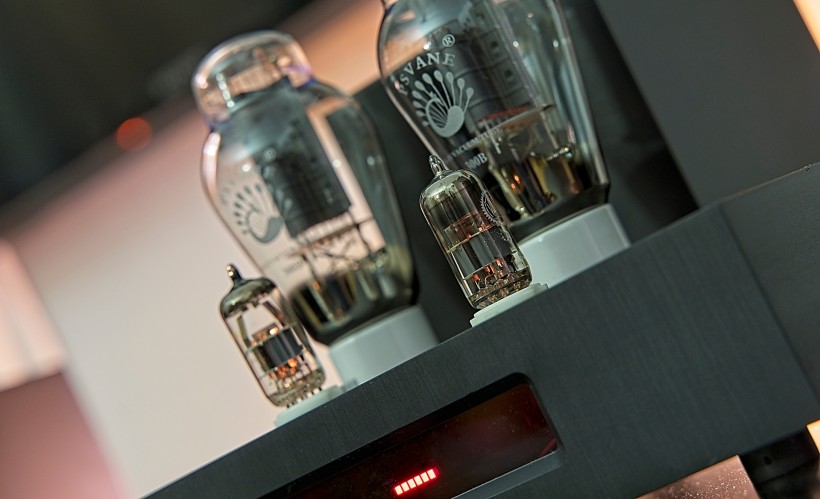
With the Polish monaural amplifiers, similar to the aforementioned Kagura (even though the former is a PSE amplifier, and the latter is a push-pull design), the music, regardless of the genre (even though some sounded even better than others – I’ll get back to that later), was delivered effortlessly, with ease and panache. It had proper scale and impressive dynamics not only on the micro (which is one of the hallmarks of all good tube designs), but also on the macro scale. So whether I listened to an intimate piano album by David Helbock or Modest Mussorgsky’s „Pictures At An Exhibition”, I was equally impressed and satisfied with what I heard.
When listening to the former, the piano seemed truly grand, with its powerful sound that created an impression of a close encounter, so to speak, or being in one room with it (not quite the same experience, but you know what I mean). Even with MACH4 speakers, which did not dig as deep in the lowest end of the range as Ubiq Audio, I could not only hear but also feel the lowest octave. At the same time, when David slowed down, all the tiny details, subtleties of the performance were as clearly delivered, allowing me to appreciate his talent. The Ancient Audio’s top amplifier excelled not only in terms of the dynamics but also in tonal contrasts, thus enriching the experience. It surprised me more than once with the fast attack, but took care of the sustain and decay as diligently and naturally. That’s what made the music and performance sound so natural, so real, and so involving.
The scale and sheer dynamics of the Mussorgsky piece were what truly distinguished Silver Grand Mono II from not only most 300B SETs, but also most tube and even many solid-state amplifiers. With symphonic music, it actually sounded more like a powerful, solid-state despite its mere 16W output. The orchestra delivered the music in a powerful and yet effortless way, even when I pushed the volume way up. The devil was in the details, as always, though, as features such as ultimate refinement of the treble kicked in as well. The tested amplifiers combined ultimate purity with a hint of ‘tube’ sweetness, filled the large, open soundstage with lots of air, which is yet another hallmark of the best triode-based designs, and added even more class and more live-like quality to the presentation.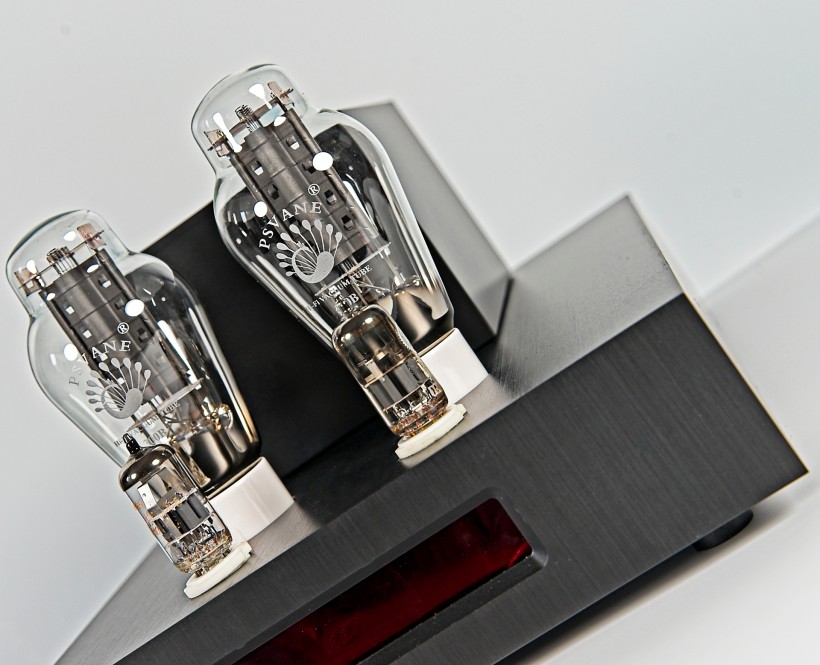
The soundtrack from the original „Gladiator”, that came next, may not quite meet the highest audiophile sound quality standards, but it is still a good recording, great music, and performance. What’s more, the tracks range from slow and peaceful to powerful and dynamic ones that ask to be played loud. That’s why I often use it in my test listening sessions. Ancient Audio Silver Grand Mono II, on top of all the already discussed qualities, proved another very special one, namely, an ability to fully control the presentation of any music. In the craziest, loudest, densest tracks, the tested amplifiers still effortlessly delivered an orderly, fully-controlled performance, and yet filled with electrifying emotions.
There was an exceptional clarity to the sound, and the music sounded in these moments a bit brighter than I was used to, and yet not actually bright or harsh (!). It was an effortless presentation with real momentum, with no signs of clipping or compression. Once again, the MACH4 speakers are easy to drive, and my room is not that big, but I pushed the Ancient Audio monoblocks quite hard, and they showed no signs of weakness. I am not used to listening to music that loud, to be honest, yet with some tracks from the „Gladiator” one just has to push the volume up, and in this case (with Poseidon controlling the volume) I could do it without worrying about any negative side effects.
When it came to those more peaceful tracks from this soundtrack, ones with vocals, Silver Grand Mono II showed more of their slightly „hidden” or rather not that obvious tube nature. Because, remember, they do offer this rare feature of sounding both natural and neutral at the same time, a feature characteristic of the best of the best amplifiers. So while they sounded more neutral than most tube amplifiers, when it came to vocals, those were conveyed in a very real, deep, vibrant, and vivid way. Unlike the best SET amplifiers, Ancient Audio did not „3D-print” singers in the middle of the stage; they were not as palpable as with the aforementioned Souga, for example, and yet their presence was as convincing as with the Japanese counterpart. In other words, the final result was similar and (at least) equally convincing, but achieved using different means.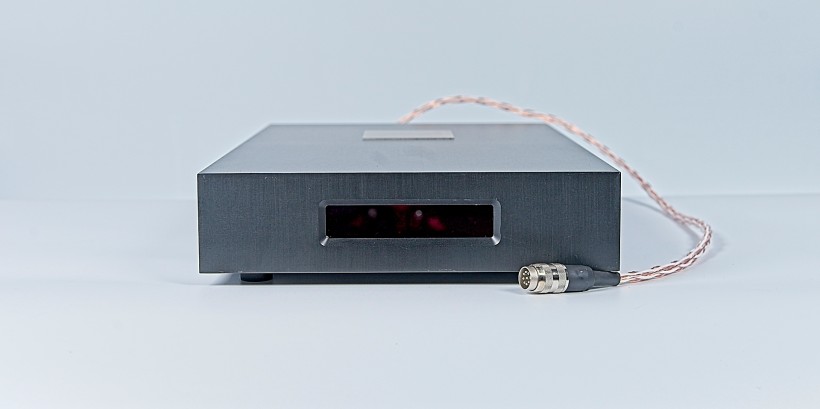
Since the Silver Grand Mono II turned out to be not the most forgiving amplifier (not the most uncompromising either), instead of reaching for the classic rock albums, most of which don’t offer the best sound quality, I played, for example, Kinga Głyk’s „Feelings” or S.M.V.’s „Thunder” albums. And it was really fun to listen to that kind of music, rich with electric bass, based on pace and rhythm as the founding elements. The tested amplifier took care not only of relaying the full dynamics of the music, saturated it with energy but also delivered it with a fantastic drive. When needed, it served a powerful, lightning-fast punch of the electric bass. Yet, even the lowest, deepest notes carried a lot of energy that even some solid-state amps fail to convey to a full extent.
Once more, my MACH4 speakers surprised me (after many years of listening to them) with how powerful and perfectly controlled their performance can be with the right amplifier driving them. The company’s own Shinai, which I’ve used with them for a long time, does them justice and sets a bar quite high, but that’s a 2x37W Class A solid-state amp. To my surprise, 2x16W from the Silver Grand Mono II was also enough to achieve equally spectacular results even when Stanley Clarke, Marcus Miller, and Victor Wooten joined forces on the „Thunder” album. Because the ability to fill the whole range, from the very bottom to the very top, with proper energy and controlling it is one thing, but being able to flawlessly differentiate the bass guitars playing at the same time is another skill altogether. A skill that, as it seems to me, the Ancient Audio’s top amplifier has mastered to perfection.
Crème de la crème of all recordings, for me, a huge fan of live music, are well-recorded live performances. I do realize that recordings are never a 1:1 copy of a live event, but some are made so well that with a proper system, one can feel more of a participant than a passive listener. And so I listened to many such albums with the Ancient Audio’s top monaural amplifiers in my setup, and I had to admit that they truly excelled in the reproduction of both performance, venue acoustics, ambiance, and last but absolutely not least, emotions. Each of those elements is necessary to fully involve the listener and to re-create the event to the fullest extent.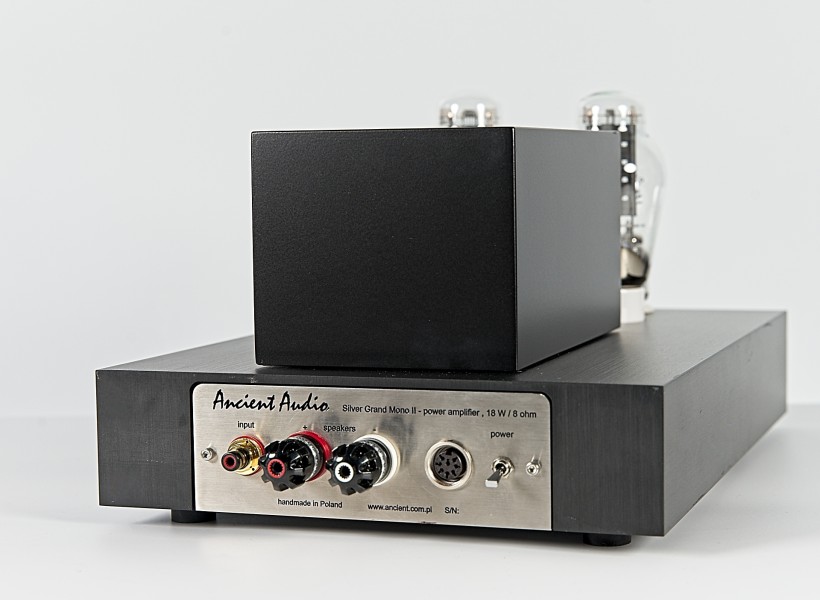
Even when I started this part of the auditions with another not-quite-audiophile-quality concert by Billy Joel, it still sounded better, much better than with almost any amp that had ever visited my room. It was recorded in a stadium, and the tested amplifier recreated (in a smaller scale, obviously) the incredible size of the venue, „showing” the huge, cheering crowd, reverberation coming from, seemingly, dozens and dozens of meters away, and so on. And yet, despite the scale of the presentation and its complexity, it was delivered in an orderly fashion. Funny enough, since it is not an audiophile recording, not every much more powerful solid-state amplifier I tested in my system was able to deliver this album in such a way.
Switching to Ubiq Audio speakers turned out quite seamless despite the fact that these are definitely more demanding of the amp paired with them. Yet, the 2x16W Silver Grand Mono II drove them as if effortlessly, with ease and sort of grace, considering how refined, how classy the sound coming from them was. Sure, the bass control was not as perfect as with MACH4, but it was still impressive, still very, very good. In fact, I switched the speakers in the middle of the aforementioned „Thunder” album, and that’s only why I even noticed a touch rounder/softer attack of the electric bass. Because when the next album started, namely the „Pax” by Tingvall Trio, my attention turned to the deeper, even more natural sound of a double bass devoid of any additional softening.
I loved what I’d heard before with MACH4, but the size of the drivers and cabinets of the Model One once more proved to be assets when it came to an acoustic recording of double bass and piano. They were simple even better equipped to show these huge instruments with all their might, and the Ancient Audio monoblocks provided not only (somewhat expected considering 300B triodes in the output) a beautiful, natural timbre and texture, incredible amount of details and subtleties of the performance, a convincing spatial setup of all three instruments, each of them in front of me as large, substantial bodies, but also sheer power to drive these large, 3-way speakers. And again, I pushed the volume way up, higher than I usually do, and heard no downsides at all.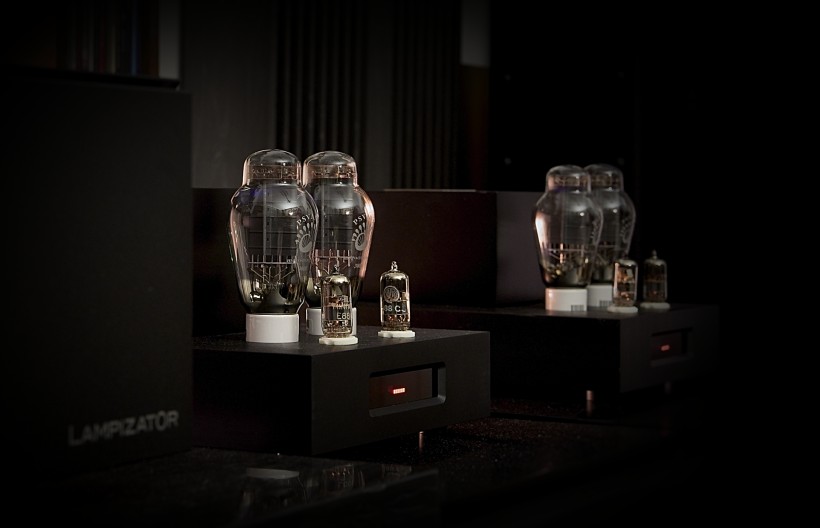
Later, I continued my quest through especially acoustic live performances, including (but not limited to) Arne Domnerus, Patricia Barber, Ray Brown, Muddy Waters, and Etta James. And again, also with these speakers (and later with M200), Silver Grand Mono II showcased how natural, how real a good recording sounds when played via a design benefiting from the unique qualities of the 300B triode. The presentation was amazingly lively, dynamic, open, spacious, and yet somewhat intimate. What surprised me most was how deeply saturated with energy the presentation was. Many more powerful amplifiers couldn’t match Ancient Audio in this regard.
Also, the amazing resolution of the tested amplifier allowed me to enjoy a unique, but importantly unforced, insight into the deepest layers of every recording. This is to tell you that despite having all that is needed for this quality, Silver Grand Mono II is not what we usually call an analytically sounding component. It is, though, one of the most musical ones I know. It used its ability to resolve even the most intricate details of the performance, the timbre and texture of Etta James’ and Patricia Barber’s vocals. They felt close, even intimate, despite being presented from a certain distance. Long story short, the remarkable resolution of the tested amplifier is not a feature used to show off, but rather to offer the most convincing, most natural musical experience possible. That’s what Ancient Audio’s top amplifier has to offer.
Even though I was already highly impressed with the Polish amplifier, it managed to further surprise and dazzle me when it came to some orchestral music. I listened, for example, to Beethoven’s „Symphony No. 9”. No matter how far up I pushed the volume (I mean, within reason), Silver Grand Mono II didn’t even flinch. The monoblocks delivered a dense, multi-layer, powerful, and at the same time nuanced performance. They were able to start and stop the music in an instant, creating those tiny moments of silence between highly dynamic and energetic fragments of the performance characteristic of von Karajan. They blasted the music through the speakers with full power when it came to a grand tutti and still sounded pure and orderly. Yes, I’d heard this piece sound even more powerful and having even more momentum a handful of times, each of them with huge solid-state amps, much larger speakers, and in much larger rooms. At my place, though, it was still probably the most impressive presentation of the 9th Symphony I ever heard.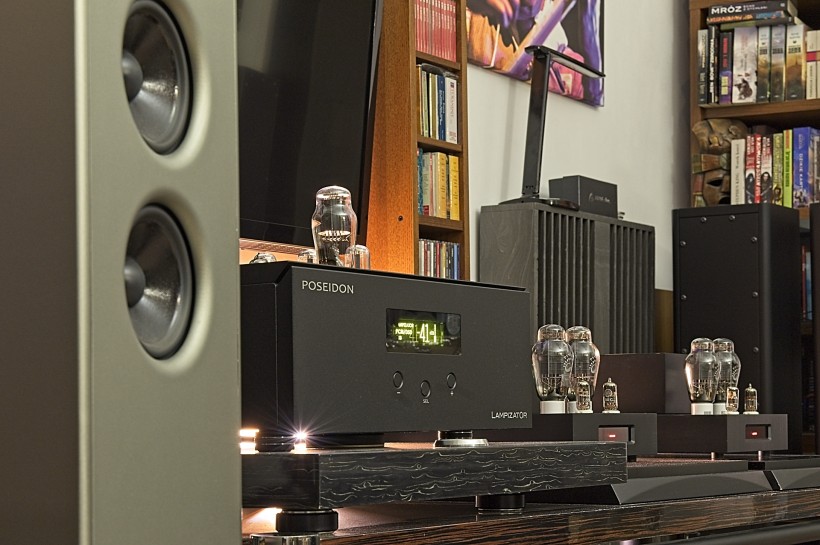
I’ve mentioned before that there are some genres, albums, and tracks that Ancient Audio’s monoblocks play even better than others. And it is true despite the fact that it is also a surprisingly versatile device that can play any music at (almost) any volume level! Yet, which was no surprise for me nor would be for any 300B fan, it shines the brightest when it comes to acoustic and vocal music, and even more so when they’d been recorded live. What the Silver Grand Mono II adds to all the aforementioned qualities is the ability to convey and differentiate from album to album (sometimes from track to track) the atmosphere, the ambiance, the acoustics, and the vibe of such recordings. It is the proverbial cherry on the top that is the ultimate factor turning listening to the recording into a unique experience.
Importantly, the tested amplifier, unlike some other 300B-based ones, did not create the impression of participation through shortening the distance between performers and listener by pushing the former forward, but rather by delivering so much information, musical and non-musical alike, that all the tiny pieces combined resulted in the feeling of being there, at the event. As a huge fan of live performances, I highly appreciated, loved (to be honest) this kind of presentation. Not thrown in my face, but rather shown from a distance and yet so present, so lively, so convincing, that it triggered an emotional and physical (feet tapping, head rocking, and so on) response. That’s what, for me, listening to music at home is all about.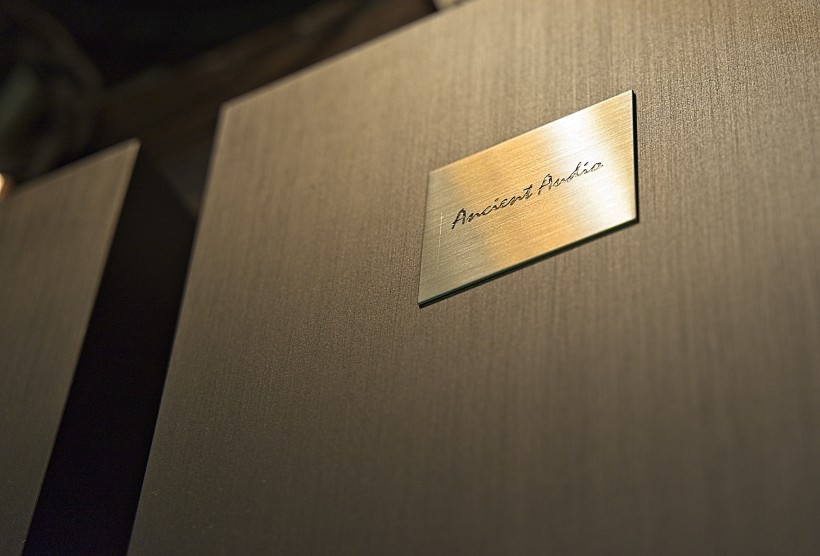
Summary
There is not much to add. Ancient Audio Silver Grand Mono II is one of the four or five best amplifiers, tube, solid-state, or hybrid, that ever visited my listening room. In many respects, it does not sound like a typical tube device, especially when it comes to the music that requires a display of power and momentum. Still, when needed, it delivers the best qualities attributed to the best SETs with a touch of sweetness in an incredibly pure treble, with beautiful, smooth, rich, and incredibly resolving midrange, and convincing rendering of spatial and emotional aspects of any recording. Overall, it delivers a well-balanced, amazingly resolving, dynamic, and absolutely immersive performance that turns listening to music into an ultimate, deep, some would say spiritual experience.
Price (when reviewed):
- Ancient Audio Silver Grand Mono II: 60.000 EUR
Technical specifications (according to the manufacturer):
- Parallel Single Ended Triode
- Four-piece unit: two mono blocks with two outboard mono power supply components
- Hand-made Teflon-insulated pure silver output speaker transformer wiring
- V-Cap Teflon / Tin Foil signal capacitors and carefully selected components
- No global or local feedback
- Internal wiring with Teflon-insulated pure silver ribbon
- Large bank of filament ultra-fast smoothing capacitors (160,000 μF total)
- Dedicated 300 B bias current meter
- Low impedance HT power supply
- Six independent mains transformers
- All voltages stabilised
- Auto bias of 300B tubes
- A large capacity of stored energy by HT capacitors (over 1000 J)
- Output power per channel: 16 W / 4 – 8 ohm
- S/N ratio: over 100 dBA
- Sensitivity: 500 mV
- Non-resonant, four aluminium blocks, each 250 x 350 x 60 mm high
Manufacturer: ANCIENT AUDIO
Associated equipment:
- Digital source: a custom passive server with WIN10, Roon, Fidelizer Pro 7.10, JCAT NET XE, and JCAT USB XE cards with FERRUM HYPSOS Signature power supply, KECES P8 (mono) linear power supply for the server, JCAT USB Isolator
- D/A Converter: LampizatOr Poseidon +Ideon Audio 3R Master Time (USB signal regenerator)
- Analog front end: J.Sikora Standard MAX turntable, J.Sikora KV12 & J.Sikora KV12 MAX tonearms, AirTight PC-3, Audio Technica PTG33 Prestige & LE SON LS10 MKII cartridges, Grandinote Celio MK IV & ESE Lab Nibiru V 5 phono stages.
- Power amplifiers: GrandiNote Shinai, Circle Labs M200, Art Audio Symphony II (modified)
- Preamplifier: Circle Labs P300
- Loudspeakers: GrandiNote MACH4, Ubiq Audio Model ONE Duelund Edition.
- Interconnects: Bastanis Imperial x2, Soyaton Benchmark, Hijiri Million Kiwami, Hijiri HCI-20, TelluriumQ Ultra Black, KBL Sound Himalaya 2 XLR, David Laboga Expression Emerald USB, David Laboga Digital Sound Wave Sapphire Ethernet
- Speaker cables: Soyaton Benchmark Mk2, WK Audio The RAY Exclusive
- Power cables: DL Custom Audio 3D-S-AC Connect, LessLoss DFPC Signature, Gigawatt LC-3
- Power: Gigawatt PF-2 MK2 and Gigawatt PC-3 SE Evo+; a custom power line with Gigawatt LC-Y in-wall cable; Gigawatt G-044 Schuko and Furutech FT-SWS-D (R)
- Network: Silent Angel Bonn N8 + Silent Angel Forester F1 + optical LAN isolator
- Racks: Base VI, Rogoz Audio 3RP3/BBS
- Anti-vibration accessories: ROGOZ-AUDIO SMO40 and CPPB16 platforms and ROGOZ AUDIO BW40MKII feet, OMEX Symphony 3S, Franc Accessories Ceramic Disc Slim Feet and Wood Block Platform, Graphite Audio CIS-35 and IC-35 Premium


